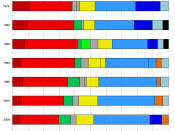Environmental protection and the limits of Cassis de Dijon
1.0 Introduction.
At beginning of the new millennium it is clear that the European Union is a recognisable global community with a comprehensive body of legislation, norms and procedures and is set to remain in this way for the foreseeable future. The Community's influence on individual member states' internal policies has become more evident and community integration is at the top of the agenda in order to promote and maintain the common market. The community is founded on the principle of free trade. As a result of this, a large part of the community's legislative and normative efforts go towards removing restrictions and barriers to trade. Such restrictions may arise due to the disparity of individual member states' legislation in certain areas. Such an area is that of the protection of the environment. Here restrictions arise from the implementation of regulatory policies by governments, concerning for example, safety and health issues and from voluntary standards adopted by domestic industries.
While not explicitly, such legislation conflicts with the principle of the free movement of goods, as different Member States seek to aspire to differing levels of environmental protection.
This essay seeks to identify how the Community has dealt with this conflict by a general enquiry into EU environmental policy and its relevance to the fundamental founding principle of free trade. It will then go on to discuss advances in 'non-harmonised' areas, with special reference to the 'landmark' European Court of Justice decision in Cassis de Dijon. The Court's decision will be discussed with reference to its effect on environmental protection policy in relation to the free movement of goods. Finally, what may be considered the ôlimits` of the Cassis judgement will then be identified with a qualitative appraisal of whether the balance...



Nice essay
This is a very nice essay.. it's very thorough and comprehensive... good job!
9 out of 9 people found this comment useful.